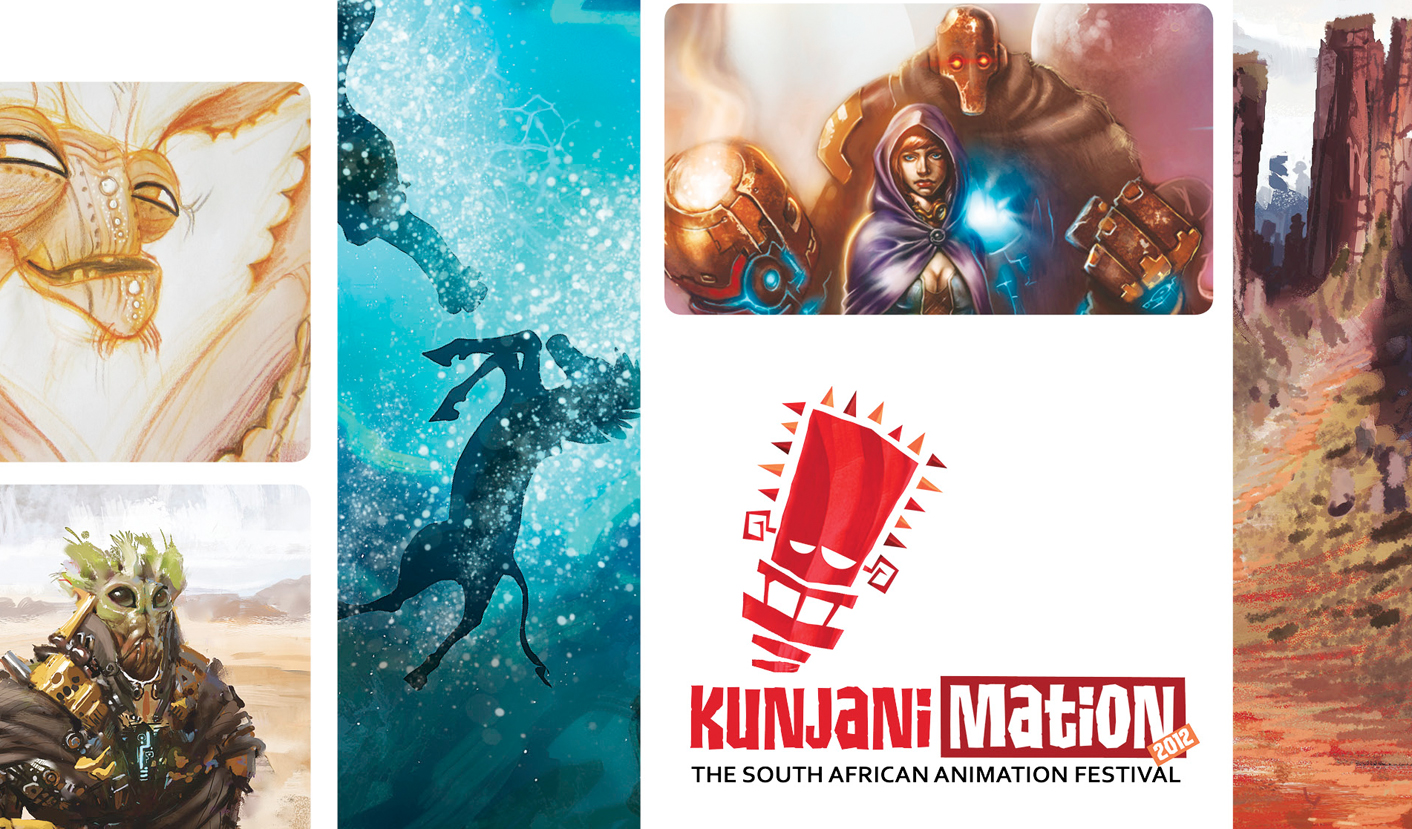There have surely been enough quality adult-targeted animated films in recent years to persuade even the most reluctant viewer that animation is no longer the Disneyfied realm of the child. In recent years, animation has been used as a medium to tackle subjects as diverse as music hall singers in the 1930s (The Triplets of Belleville, 2003), the Iranian Revolution (Persepolis, 2007) and the travails of ageing (Pixar's Up, 2009). Up was notable for being nominated for five Academy Awards, including best picture. It was only the second animated picture ever to receive the latter nod, though, which suggests how long it has taken for animation to achieve adult respectability.
In South Africa, the animation industry has only really grown up over the past two decades, Kunjanimation director Daniel Snaddon tells me in a snatched chat between festival screenings. "Historically it has been centred around ad agencies," he explains, with animated series seen as not generally being cost-effective for South African TV. But things are starting to change: one of the South African features premiering at the festival, Triggerfish Animation Studio's Adventures in Zambezia, is currently cleaning up on the European cinema circuit, with over a million tickets sold.
Animator Snaddon, 29, explains that his own love for animation has taken an unusualroute. Born in America to a mixed-race couple, he moved to South Africa as a child with his family in the late 1980s. Because his mother did not trust the South African public broadcaster's propaganda, she was adamant that her children be sheltered from domestic TV programming. Before they left the US, therefore, she filled more than 100 VHS tapes with old cartoons. "We watched them over and over again," laughs Snaddon. "So in that way, animation was stamped into my brain."
He has an interesting theory as to why animation hasn't really caught on in the South African mainstream yet: South African Baby Boomers didn't grow up with television. "It's our experience that people over 55 in this country often tend to find animation gaudy and childish, because they don't have the same connection with it," he says.
But this might be changing. Snaddon says the South African animation industry is approaching a "tipping point", due partly to initiatives like Kunjanimation. The festival's first edition was last year, after the Annecy International Animation Film Festival contacted the French Institute in South Africa to ask if it thought there might be any local appetite for international animation. Last year’s festival was far more low-key, consisting only of two nights of screening and some animation workshops given at Wits, but the events were enthusiastically received.
This year things have been stepped up a notch, with the aid of collaboration between Animation South Africa, the French-South African Seasons Project, the National Film and& Video Foundation and Wesgro. The festival runs in Cape Town from 17 to 21 October and in Johannesburg on 26 and 27 October. The line-up has been structured to appeal to both to those working in the film and animation industry, and people who simply love film.
For those in the industry, there are workshops given by local experts as well as staff of the Gobelins School of the Image in Paris, widely regarded as the world’s top animation academy. Snaddon says French animators are in high demand by the major US animation studios because they "push the medium”. France is the third biggest producer of animation in the world. "There's a lot that we can learn from them," Snaddon says. On hand to give instruction will be industry luminary Alexandre Heboyan, of DreamWorks. "He worked on Kung Fu Panda!" says Snaddon with a trace of awe.
For movie-lovers, there are screenings of collections of short animated pieces as well as feature films. These are, unusually, free - tickets simply need to be booked via email. Among the films being shown is Tengers, by Michael Rix, the first ever feature-length animated movie made in South Africa, in 2007.
I watched Animation SA's South African Animation Showcase 2012, which consisted of about 90 minutes of the best local animation pieces. There were quite a number of TV ads - for Clover, DStv, and Volkswagen, to name a few - making the point that in South Africa, the money for creative projects often lies in advertising. A few local music videos also featured, including the video for the Parlotones song Honey, which mixes animation of a boy on a bike with real footage of Chapman's Peak. It's rather lovely, whatever you think of the song.
The strength of the collection lay in the astonishing diversity both of topics covered and animation styles showcased, suggesting a real vibrancy to the local animation scene. The programme opened with artist William Kentridge's 1994 film Felix in Exile, consisting of charcoal drawings, often of scenes of death, blending into each other. But to balance things out, also featured were pieces like the animation college's extremely sophisticated short film Wing It, about a boy trying to build an airplane who receives unexpected help from aliens. It's very Pixar-ish in its execution, but slick enough to have emerged from any major US animation studio.
I thought the stand-out piece, however, was AFDA student Justine Puren's Shadow Boy, about a pair of children deserted by their mother who must find their way on the mean streets of a South African city. It was made using a rather unusual-looking technique called sand animation, in which the animator creates each frame by moving sand around on a lit-up piece of glass. Snaddon informs me it's a very old technique. The effect is hauntingly beautiful.
I had a question for Snaddon, though: why do so few local animation pieces - at least of those showcased at the festival - seem to include dialogue? His answer is twofold: firstly because the point of animation is to make clear statements visually, in a universally intelligible way. Secondly, though, he suspects that part of the reason may be a 'cultural cringe' attached to hearing South African accents onscreen. "It's the same with my Australian animator friends," he says.
For those interested in attending the public screenings, Snaddon recommends French director Jean-Francois Laguionie's Le Tableau, with the director in attendance. Children will enjoy Ernest et Celestine, a beautiful hand-drawn film never shown before in South Africa , he says. And for viewers craving something a little more local, there's Legends of the Sky Kingdom, a Zimbabwean feature from 2004 in which three children escape from an evil emperor. That sounds suspiciously allegorical. DM
Read more:
- Kunjanimation website





